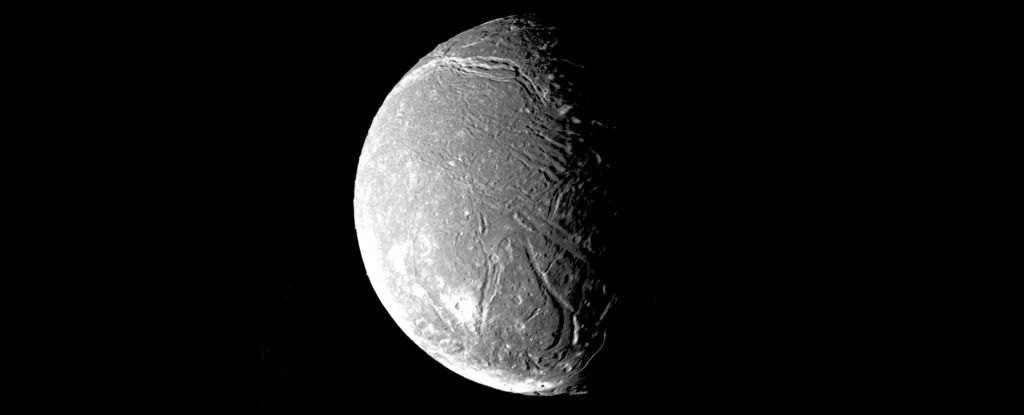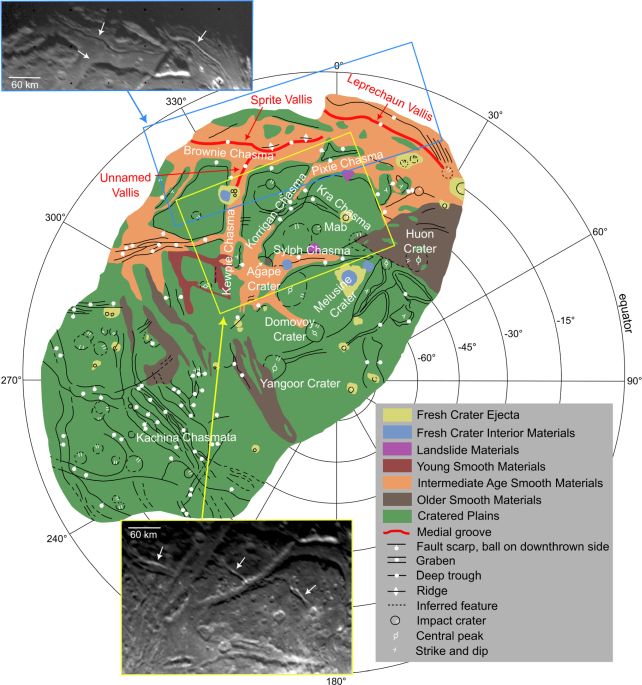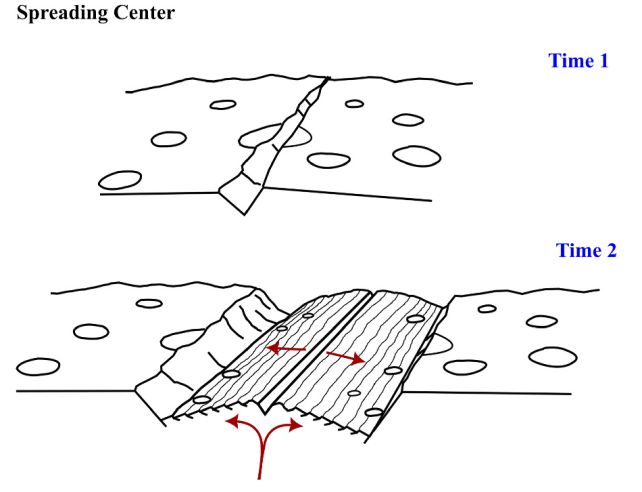
The Solar System has a plethora of secrets, much like a clever hobbit with pockets full of hidden treasures, including mysterious oceans. Astronomers suspect that the moons of Jupiter, Saturn, Uranus, and Neptune may contain liquid oceans concealed beneath thick layers of ice.
These icy exteriors pose challenges for scientists on Earth who aim to explore these hidden liquid worlds. However, one moon, Ariel, might offer a glimpse into its inner composition. Its surface features profound chasms that could reveal materials seeping from its depths.
Such materials may consist of carbon dioxide ice and other carbon-rich compounds, potentially formed through chemical reactions occurring within the moon. If researchers confirm this, these chasms could provide valuable insights into Ariel’s interior without more invasive exploration methods.
“If we are correct, these medial grooves might be the prime locations to trace the carbon oxide deposits and learn more about the moon’s interior,” states planetary geologist Chloe Beddingfield from Johns Hopkins University Applied Physics Laboratory.
“No other surface features appear to facilitate material movement from within Ariel, which makes this discovery particularly intriguing.”

The deep cracks on Ariel’s surface are captivating. Their floors exhibit parallel grooves, marking some of the youngest geological features observed on the moon. The origin of these formations remains uncertain and is closely related to the activities happening beneath the surface.
Earlier research indicated that these features might arise from interactions between tectonic and volcanic activities, yet specifics have eluded researchers. Beddingfield and her team utilized observational data and formation models to address these uncertainties.
They unveiled that a process similar to one occurring on Earth, known as spreading, might explain the markings on Ariel. This phenomenon occurs at volcanic ridges on Earth, where the ocean floor separates, allowing material from below to rise and form new crust.

On Ariel, spreading could manifest as warmer substances rise from below, causing the moon’s crust to split before filling the resulting gaps. The researchers observed that when they aligned the two edges of Ariel’s chasms, they fit together perfectly, suggesting that the parallel grooves at the chasms’ floors are indicative of gradual material deposits over time.
This discovery holds several intriguing implications. In the past, moons of Uranus have entered a phenomenon known as orbital lockstep, where their orbital periods align into precise ratios called resonance. Such orbital characteristics create a gravitational interplay that leads to internal heating, melting, and refreezing.
This resonance might be responsible for surface alterations on Ariel while simultaneously enabling the potential for hidden oceans due to sufficient interior warmth to sustain liquid water. Recent observations from the JWST indicate that such an ocean may exist on Ariel.
If this theory holds, the likely ocean could be linked to the carbon dioxide ice present on the moon‘s surface and within its chasms, though more data is needed for conclusive understanding.
“While we can only speculate on the ocean’s size and depth beneath Ariel’s surface, it may be too isolated to interact with spreading centers,” Beddingfield notes.
“There’s still much to uncover. Although carbon oxide ices are detected on Ariel’s surface, it remains uncertain if they correlate with the grooves since Voyager 2 lacked the instruments necessary to detail the ices’ distribution.”
It’s high time for an exploration mission to Uranus and Neptune. We must include Ariel’s enigmatic grooves on the agenda for future investigations when this mission finally takes place.
Let’s keep the momentum going, space agencies!
This research is detailed in The Planetary Science Journal.









